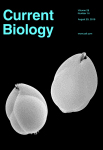Natural Genetic Variation in a Multigenerational Phenotype in C. elegans
Curr Biol. 2018 Aug 20;28(16):2588-2596.e8. doi: 10.1016/j.cub.2018.05.091. Epub 2018 Aug 2.
Frézal L1, Demoinet E2, Braendle C2, Miska E3, Félix MA4.
Author information
2. Université Côte d’Azur, CNRS, INSERM, IBV, Nice, France.
3. Wellcome Cancer Research UK Gurdon Institute, University of Cambridge, Tennis Court Road, Cambridge CB2 1QN, UK; Department of Genetics, University of Cambridge, Downing Street, Cambridge CB2 3EH, UK; Wellcome Sanger Institute, Wellcome Trust Genome Campus, Cambridge CB10 1SA, UK. Electronic address: eric.miska@gurdon.cam.ac.uk.
4. Institut de Biologie de l’Ecole Normale Supérieure, Centre National de la Recherche Scientifique, INSERM, École Normale Supérieure, Paris Sciences et Lettres, Paris, France. Electronic address: felix@biologie.ens.fr.
Abstract
Although heredity mostly relies on the transmission of DNA sequence, additional molecular and cellular features are heritable across several generations. In the nematode Caenorhabditis elegans, insights into such unconventional inheritance result from two lines of work. First, the mortal germline (Mrt) phenotype was defined as a multigenerational phenotype whereby a selfing lineage becomes sterile after several generations, implying multigenerational memory [1, 2]. Second, certain RNAi effects are heritable over several generations in the absence of the initial trigger [3-5]. Both lines of work converged when the subset of Mrt mutants that are heat sensitive were found to closely correspond to mutants defective in the RNAi-inheritance machinery, including histone modifiers [6-9]. Here, we report the surprising finding that several C. elegans wild isolates display a heat-sensitive mortal germline phenotype in laboratory conditions: upon chronic exposure to higher temperatures, such as 25°C, lines reproducibly become sterile after several generations. This phenomenon is reversible, as it can be suppressed by temperature alternations at each generation, suggesting a non-genetic basis for the sterility. We tested whether natural variation in the temperature-induced Mrt phenotype was of genetic nature by building recombinant inbred lines between the isolates MY10 (Mrt) and JU1395 (non-Mrt). Using bulk segregant analysis, we detected two quantitative trait loci. After further recombinant mapping and genome editing, we identified the major causal locus as a polymorphism in the set-24 gene, encoding a SET- and SPK-domain protein. We conclude that C. elegans natural populations may harbor natural genetic variation in epigenetic inheritance phenomena.

